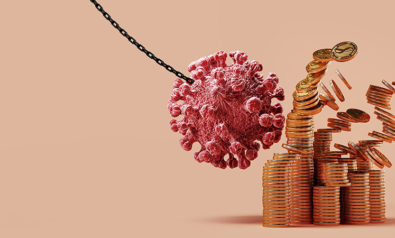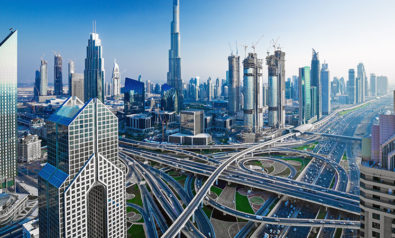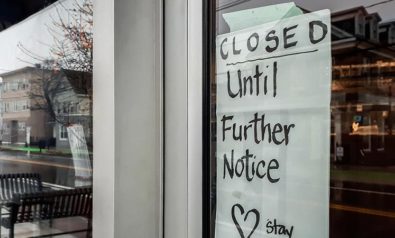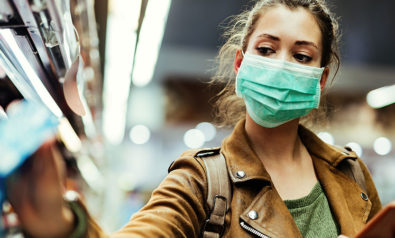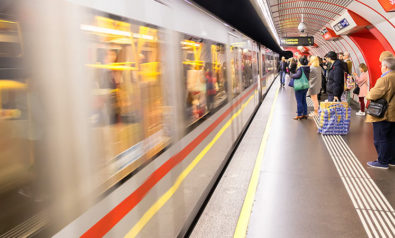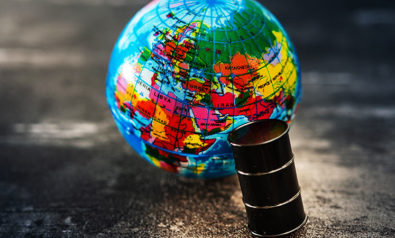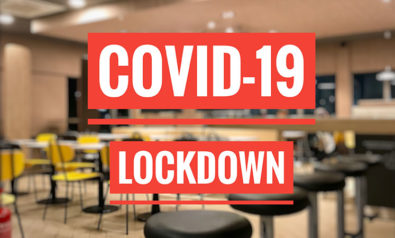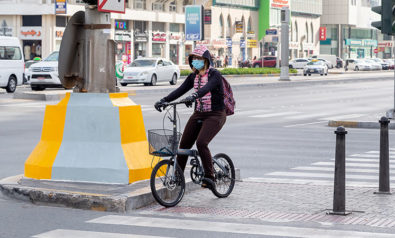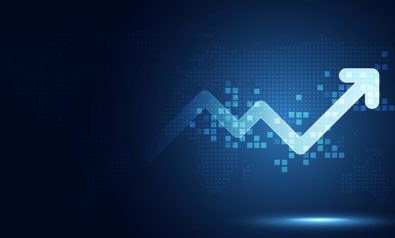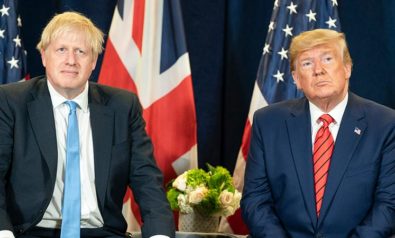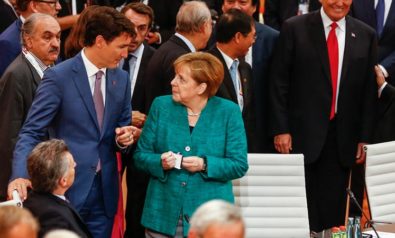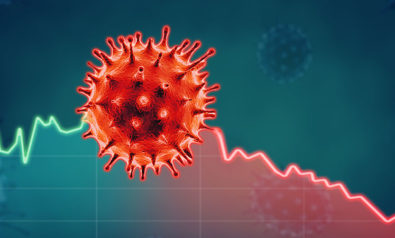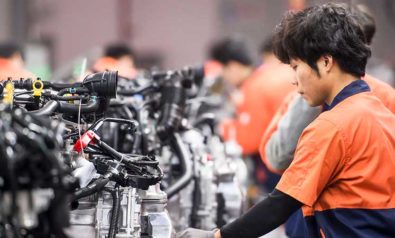You pay little attention to the systems of your body — circulatory, digestive, pulmonary — unless something goes wrong. These automatic systems ordinarily go about their business, like unseen clockwork, while you think about a vexing problem at work, drink your morning cup of coffee, walk up and down the stairs and head out to your car to begin your morning commute. If you had to focus your attention on breathing, pushing blood through your veins and metabolizing food, you’d have no time or energy to do anything else. The body abhors the micromanaging of the mind.
The same applies to the world’s markets. They whir away in the background of your life, providing loans to your business, coffee beans to your nearby supermarket, labor to build your house, gas to fill your car. You take all of these markets for granted. All you have to concern yourself with is earning enough money to gain access to these goods and services. That’s what it means to live in a modern economy. The days of hunting and gathering, of complete self-sufficiency, are long past.
Will the Coronavirus Kill Globalization?
And then, in a series of sickening shifts, the markets go haywire. As with a heart attack, you no longer can take the optimal performance of these systems for granted.
Cardiac Arrest
The coronavirus crisis has thrown the global economy into cardiac arrest, and now you are acutely aware of the very markets that you had previously just assumed would function as normal. The first indication was the precipitous drop in the stock market that took place in late February. Then, as the United States began to enter quarantine, the labor market collapsed, and hundreds of millions of people were suddenly out of work. Shortages in a few key commodities — masks, ventilators, toilet paper — began to appear.
It is one of the central tenets of laissez-faire capitalism that markets behave like automatic systems, that an “invisible hand” regulates supply and demand. Market fundamentalists believe that the less the government interferes with these automatic systems, the better. They argue, to the contrary, that markets should increasingly take over government functions: a privatized post office, for instance, or Social Security accounts subjected to the stock market.
Market fundamentalists are like Christian Scientists. They refuse government intervention just as the faithful reject medical intervention. Much like God’s grace, the invisible hand operates independently of a human plan.
Then something happens, like a pandemic, which tests this faith. States around the world are now spending trillions of dollars to intervene in the economy: to bail out banks, save businesses, help out the unemployed. Countries are imposing export controls on key commodities. As in wartime, governments are directing manufacturers to produce critical goods to fill an unexpected demand for greater supply.
These are emergency interventions. The market fundamentalist looks forward to the day when stay-at-home restrictions are lifted, people go back to work, the stock market barrels back into bull mode and the invisible hand, with perhaps a few Band-aids across the knuckles, returns to its job. But some pandemics fundamentally alter the economy. In such emergencies, people realize that an economy is constructed and thus can be reconstructed. Are we now at just such a moment in world history? Will the coronavirus permanently transform the relationship between the state and the market? Let’s take a look at three key markets — oil, food and finance — to measure the impact of the pandemic and the prospects for transformation.
Oil
In 2007, Ecuadorian President Rafael Correa offered to forgo digging for oil beneath the Yasuni national park in exchange for $3.6 billion from the international community. No one took him up on the offer.
When the US price of oil went below zero last week, I immediately thought of Correa’s offer. The mainstream scoffed at the Ecuadorian leader back in 2007. How on earth could you possibly propose to keep oil under the earth? The world economy runs on fossil fuels. You might as well ask your kid to keep her Halloween candy uneaten in the back of the cupboard. Today, however, the world is glutted with oil. The global recession has radically reduced the need for oil and gas.
In the United States, transportation absorbs nearly 70% of oil consumption. With airplanes grounded, fewer trains and busses in operation and highways uncongested, the demand for oil has dropped precipitously. Businesses, too, are using less energy. It’s not just oil. Companies devoted to pumping natural gas out of shale deposits are filing for bankruptcy as their market value drops precipitously: the price of a share of fracking giant Whiting Petroleum fell from $150 a couple of years ago to 67 cents on March 31.
It’s gotten to the point that you almost can’t give away the stuff. After all, if you somehow found yourself with a bunch of barrels of oil, where would you store it? Oil storage tanks in the United State are near capacity. “Oil supertankers are looking like petroleum paparazzi, crowding the Los Angeles shoreline, either as floating storage or waiting on some kind of turn in sentiment,” Brian Sullivan writes at CNBC. “With prices higher in coming months, for now it pays to sit on oil and hope to sell it for more money down the pipeline.”
Oil-producing nations, after years of boosting their supplies, finally agreed in mid-April to cut production by 10% — about 10 million gallons a day. In other words, they are deciding to leave oil in the ground. Now, however, it doesn’t even qualify as a half-measure, since demand has dropped by 35%. The oil producers are awaiting the end of recession, when the quarantined go back to work, and everyone jumps on their transport of choice to make up for lost travel. They are awaiting a return to normal.
But the market for fossil fuels is not normal. The notion that the invisible hand will steer economies in a sustainable direction is hogwash. We are long past the moment when we should have paid Correa and everyone else to leave the oil and gas in the ground and move toward a world powered entirely by clean energy. The market treats the environment either as a commodity like any other or as an “externality” that doesn’t factor into the final price of goods and services. That is so 19th century.
Climate change demands an intervention into the energy markets with restrictions on production, subsidies for clean energies like solar, and government purchases of electric cars. Returning to “normal” after the pandemic is not a viable option.
Food
Like the oil exporters, food producers in the United States are restricting production as well. In Delaware and Maryland, chicken producers are euthanizing 2 million chickens because the processing plants don’t have enough workers. Sickness and death in these facilities, which has caused closures that are disrupting the supply chain, has prompted Trump to classify such plants as “critical infrastructure” that needs to remain open. Meanwhile, thousands of acres of fruits and vegetables are rotting in the fields in Florida because of the suspension of bulk food sales to schools, theme parks and restaurants. The shortage of pickers — often migrant laborers whose mobility has been restricted — is complicating harvests.
Unlike oil, however, the overall demand for food remains high. The grocery business is booming. Food banks are overwhelmed by a surge unlike any in recent decades. The US Department of Agriculture (USDA) ordinarily could swoop in and buy up surplus production — as it did for soybean growers during the trade war with China — for use in food banks and other distribution programs. But as with so many other government agencies in the Trump era, the USDA has been slow to act, despite repeated pleas from growers and governors.
The pandemic is highlighting all the problems that have long plagued the food supply. First, there is the mismatch between supply and demand. Around 820 million people globally didn’t have enough to eat in 2018, a figure that had been rising for three years in a row and contrasts with another rising number: the 672 million obese people in the world. In the United States, fully 40% of food goes to waste every year. So, obviously the invisible hand does a pretty poor job of achieving market equilibrium.
Second, despite a growing movement to eat locally and seasonally, the food system still eats up a huge amount of energy. The problem lies not so much with bananas arriving by cargo ship, which is relatively efficient, but with perishable items delivered by plane. And it’s what we eat, rather than where the products come from, that matters most. “Regardless of whether you compare the footprint of foods in terms of their weight (e.g. one kilogram of cheese versus one kilogram of peas); protein content; or calories, the overall conclusion is the same,” writes Hannah Ritchie. “Plant-based foods tend to have a lower carbon footprint than meat and dairy. In many cases a much smaller footprint.”
Third, because of economies of scale and abysmal labor practices, food in the industrialized world is too often grown by agribusiness, processed by transnational corporations and picked or handled by workers who don’t even make close to a living wage.
Returning to this kind of food system after the pandemic fades would be truly unappetizing. The livable wage campaign must spread to the countryside, meat substitutes must get an additional lift through government and institutional purchases, and innovative programs like the Too Good to Go app in Europe — which sells extra restaurant and supermarket food at a discount — must be brought to the United States to cut down on food waste and get meals to those in need.
Finance
The financial crisis of 2008-09 exposed the fragility and fundamental inequality of the global financial system. But all along the invisible hand has been pickpocketing poor Peter to pay prosperous Paul. Bankers, stockbrokers and financial gurus have constructed a casino-like system that occasionally doles out a few pennies to the people playing the slots even as it enriches the house — the top 1%-2% — at every turn.
The most outrageous part of this scheme is that the financial crisis demonstrated just how bad the financiers were at their own game. Not only did they not go to prison for illegal activities, they were — with a few exceptions — not even punished economically for their market failures. They were either too big, too rich, or too powerful for the government to allow them to fail.
In The New Yorker, Nick Paumgarten quotes a prominent investment banker at a bond fund: “’In the financial crisis, we won the war but lost the peace.’ Instead of investing in infrastructure, education, and job retraining, we emphasized, via a central-bank policy of quantitative easing (what some people call printing money), the value of risk assets, like stocks. ‘We collectively fell in love with finance,’ he said.”
After the last financial crisis, the wealthy, who are heavily invested in the stock market, did quite well, while everyone else took a hit. Explains Colin Schultz in Smithsonian magazine: “While families hovering around the average net worth lost 36 percent over the past decade — dropping from $87,992 in 2003 to $56,335 in 2013 — people in the top 95th percentile actually gained 14 percent in the same tumultuous period — going from $740,700 in 2003 to $834,100 in 2013.”
The Trump administration is clearly in love with finance. Even before the pandemic hit, Trump’s tax reform provided the top six US banks with $32 billion in savings. That’s more than what the 2008 bank bailout provided — and remember, banks mostly paid back those earlier loans. The stock market also benefited from an unprecedented upswing in stock buybacks — $2 trillion combined in 2018 and 2019 — that enriched shareholders at the expense of workers.
The $2 trillion in initial stimulus funds that the US government is providing this time around has gone to individuals (those Trump-signed checks in the mail), small businesses (except when it went to big businesses), hospitals and unemployed workers. There’s also money for farmers, schools, food stamps, and (alas) the Pentagon. Future rounds of stimulus spending might include infrastructure, more aid to states and localities and funds for smaller banks.
There’s not much enthusiasm, at least publicly, to bail out Wall Street. Stock buybacks were explicitly excluded from the stimulus package. Meanwhile, the stock market has begun to climb out of the basement in the last couple weeks, largely on the strength of the news of all this new money being pumped into the economy.
But just as the tax bill was a covert giveaway to financial institutions, so have been several of the administration’s pandemic responses. Quantitative easing, by which the Federal Reserve buys bonds and mortgage-backed securities, has increased the amount of liquidity available to financial institutions. In the latest effort, the Fed announced that it will buy $500 billion in corporate bonds, but without any of the strings attached to other assistance such as limits on stock buybacks or executive compensation. The banks are even nickel and diming people by seizing stimulus check deposits to cover overdrawn accounts.
Out of a total pie of around $6 trillion in potential stimulus spending, banks and major corporations are well-placed to grab the lion’s share. Writes Nomi Prins at TomDispatch: “In the end, according to the president, that could mean $4.5 trillion in support for big banks and corporate entities versus something like $1.4 trillion for regular Americans, small businesses, hospitals, and local and state governments. That 3.5 to 1 ratio signals that, as in 2008, the Treasury and the Fed are focused on big banks and large corporations, not everyday Americans.”
Invisible hand? Hardly. That’s the very visible hand of government tilting the financial markets even more in favor of the rich. As for the invisible enrichment that goes on beneath the surface, otherwise known as corruption, the Trump administration has gutted the oversight mechanisms that could bring those abuses to light.
It’s time to end America’s love affair with finance. That means, in the short term, higher taxes on the very rich, limitations on CEO pay built into all bailouts and reviving all the reasonable proposals for reforming the financial sector that were either left out of or didn’t get full implemented in the Dodd-Frank Wall Street Reform and Consumer Protection Act passed in the wake of the last financial crisis.
Post-Pandemic Economics
The Black Death depopulated Europe, killing as much as 60% of the population in the middle of the 14th century. Feudalism depended on lots of peasants working the land to support the top 1% of that era. By carrying off so many of these workers, the Black Death made a major contribution to eroding the foundations of the dominant economic system of the time.
The coronavirus will not kill anywhere near as many people as the Black Death did. But it may well contribute to exposing the failures of “free markets” and the scandal of governments intervening in the economy on behalf of this era’s 1%. The pandemic is already, thanks to huge stimulus packages, undermining the “small government” canard. A state apparatus deliberately hobbled by the Trump administration — after earlier “reforms” by both parties — did a piss-poor job of dealing with this crisis. That doesn’t bode well for dealing with the even larger challenge of climate change.
The short-term fixes described above in the oil, food and finance sectors are necessary but insufficient. They shift the balance more toward the government and away from the “free” market. They’re not unlike the New Deal: reforming capitalism to save capitalism. But this pandemic is pointing to an even more fundamental transformation, to a new definition of economics.
The tweaking of markets to achieve optimal performance is much like the rejiggering of earth-centric models of the universe that took place in the Middle Ages. These models became more and more complex to account for new astronomical discoveries. Then along came Copernicus with a heliocentric model that accounted for all the new data. It took some time, however, for the old model to lose favor despite its obvious failures.
The global economy remains market-centered, even though the evidence has been mounting that these markets are failing us and the planet. Tweaking this model isn’t good enough. We need a new Copernicus who will provide a new theory that fits our unfolding reality — a new environment-centered economic system that can maximize not profit but the well-being of living things.
*[This article was originally published by Foreign Policy in Focus.]
The views expressed in this article are the author’s own and do not necessarily reflect Fair Observer’s editorial policy.
Support Fair Observer
We rely on your support for our independence, diversity and quality.
For more than 10 years, Fair Observer has been free, fair and independent. No billionaire owns us, no advertisers control us. We are a reader-supported nonprofit. Unlike many other publications, we keep our content free for readers regardless of where they live or whether they can afford to pay. We have no paywalls and no ads.
In the post-truth era of fake news, echo chambers and filter bubbles, we publish a plurality of perspectives from around the world. Anyone can publish with us, but everyone goes through a rigorous editorial process. So, you get fact-checked, well-reasoned content instead of noise.
We publish 2,500+ voices from 90+ countries. We also conduct education and training programs
on subjects ranging from digital media and journalism to writing and critical thinking. This
doesn’t come cheap. Servers, editors, trainers and web developers cost
money.
Please consider supporting us on a regular basis as a recurring donor or a
sustaining member.
Will you support FO’s journalism?
We rely on your support for our independence, diversity and quality.




